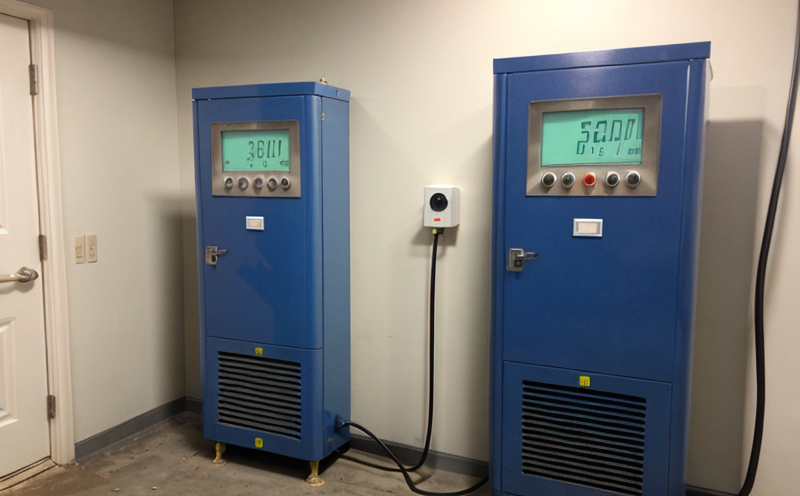ISO 4225 Terminology for Air Quality in Mines Testing
The International Organization for Standardization (ISO) has developed ISO 4225:1983, which provides a comprehensive framework of terminology specifically designed to address the complexities and nuances associated with air quality in mines. This standard is crucial for ensuring consistent communication among mining professionals regarding air quality parameters.
Mining environments present unique challenges due to the presence of various gaseous contaminants such as carbon monoxide (CO), methane (CH4), hydrogen sulfide (H2S), and other potentially harmful substances. The terminology outlined in ISO 4225 ensures that these terms are universally understood, thereby enhancing collaboration and compliance.
The standard defines key concepts related to air quality measurement, including but not limited to:
- Sampling techniques for gases
- Detection methods
- Measurement units
- Data interpretation guidelines
The definitions provided in this ISO help in reducing ambiguity and ensuring that all stakeholders are on the same page. This is particularly important as it facilitates better communication between mining companies, regulatory bodies, and health and safety personnel.
Understanding these terms can significantly impact decision-making processes related to air quality management within mines. For instance, knowing what constitutes acceptable levels of CO in a mine helps in setting appropriate safety protocols. Similarly, understanding the correct terminology for sampling techniques ensures that samples are collected accurately, leading to more reliable data and improved decision-making.
The use of this standard is not limited to just one aspect of mining but encompasses various facets such as ventilation systems, gas monitoring devices, and air quality management strategies. It serves as a foundational document that supports the implementation of effective air quality control measures in mines globally.
In summary, ISO 4225 plays an essential role in standardizing terminology for air quality in mines. By providing clear definitions and consistent language, it contributes to safer working conditions, more efficient regulatory compliance, and overall better management practices within the mining sector.
Scope and Methodology
The scope of ISO 4225 is broad, covering a wide range of terms relevant to air quality in mines. The standard aims to define technical vocabulary used by professionals involved in mining operations concerning ventilation systems, gas monitoring devices, and related aspects.
Key areas addressed include:
- Sampling methods for different types of gases
- Detection techniques employed in gas analysis
- Data interpretation strategies
- Units used for measuring air quality parameters
The methodology behind creating this standard involves extensive research and consultation with industry experts. This collaborative effort ensures that the terminology is both practical and applicable across diverse mining environments.
To achieve this, ISO 4225 follows a structured approach:
- Identification of critical terms based on current practices
- Consultation with stakeholders to refine definitions
- Validation through pilot studies
- Finalization and publication
This rigorous process guarantees that the terminology is accurate, relevant, and widely accepted within the mining community. As a result, ISO 4225 serves as a valuable resource for anyone working in or studying air quality issues in mines.
Understanding this scope and methodology helps users appreciate how the standard has been developed to meet specific needs while maintaining high standards of accuracy and applicability.
Customer Impact and Satisfaction
The implementation of ISO 4225 has had significant positive impacts on customer satisfaction within the mining industry:
- Better Communication: The standardized terminology ensures that all parties involved in air quality management are speaking the same language, reducing misunderstandings.
- Enhanced Safety: Clear definitions of terms related to gas detection and measurement contribute to safer working environments by facilitating timely interventions.
- Informed Decision-Making: Accurate data interpretation supported by precise terminology enables better decision-making processes regarding air quality management strategies.
- Improved Compliance: The alignment with international standards enhances compliance efforts, ensuring that mining operations meet all necessary regulatory requirements.
Customers who adopt ISO 4225 report higher levels of satisfaction due to these tangible benefits. They find it easier to manage air quality issues effectively and more confidently comply with relevant regulations.
Use Cases and Application Examples
The use cases for ISO 4225 are diverse, encompassing various aspects of mining operations:
- Ventilation Systems: Ensuring proper ventilation through accurate air quality measurements.
- Gas Monitoring Devices: Calibrating and interpreting data from these devices using the terminology defined in ISO 4225.
- Air Quality Management Strategies: Implementing strategies that rely on precise terminology for effective implementation.
In practice, mining companies use ISO 4225 to establish air quality monitoring protocols. For example, a company might implement regular sampling and analysis of gases like CO and H2S using methods defined in the standard. This approach ensures timely identification of potential hazards and prompt action to mitigate them.
Furthermore, compliance officers can rely on ISO 4225 when reviewing internal procedures or preparing for audits by regulatory bodies. R&D engineers may also find value in this standard as they develop new technologies aimed at improving air quality within mines.





